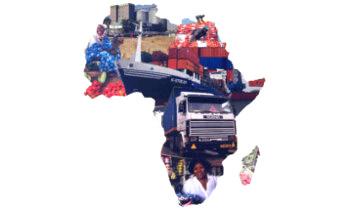Trade and Market Integration

The main objective of pursuing trade and market integration in Africa is to boost intra-African trade and investments. When trade flows are faster and more cost-effective, business and consumers in the regions benefit as it creates employment, industrial linkages, economic diversification and structural transformation that, by extension, generate sustainable development on the continent.[1] In 2014, the share of intra-African exports were about 16 per cent of total exports, compared to 18 per cent for Latin America, 54 per cent for Asia, and 66 per cent for Europe.[2] Notwithstanding that intra-African trade remains lower than optimal, it is a fact that intra-African trade is far more diversified and have higher shares of manufactured goods than primary commodities exported within the continent, 34 per cent versus 11 per cent, respectively. Boosting intra-African trade, therefore, has the potential to contribute to further specialization, diversification and structural transformation in Africa.
In recent years, an encouraging upsurge in efforts to boost intra-African trade has been observed among African countries. The Action Plan for Boosting Intra-African Trade (BIAT), TFTA, and the recently launched negotiation for CFTA are specific steps to establish the African Economic Community – and thus, stimulate the trade of goods and services through regional integration agreements designed to eliminate tariff and non-tariff barriers. Although a number of trade and market integration-related agreements, protocols and conventions have been signed among member States in their respective regional economic communities, a number of factors have contributed to its slow implementation. Among the main barriers to trade, are poor infrastructure developments, maintenance and connectivity, and conflicts and security issues in subregions.
Moreover, a number of the continent’s railways and roads often lead to marine ports rather than cross-border linkages over land. Internal waterways are, similarly, insufficiently exploited and in most cases underdeveloped, making it difficult to conduct intra-continental business. Further emphasis to revamp national transport and infrastructure that can create linkages among African regions is therefore needed in order to improve the movement of goods and services across the continent. Regional infrastructure development programmes, such as the Programme for Infrastructure Development in Africa, are thus optimum ways to achieve continental connectivity for Africa. It is equally imperative that African countries and regional economic communities streamline and apply existing regional trade agreements into their national policy and executive bodies to obtain the benefits associated with deeper trade and market integration in Africa.
[1] African Union Commission, African Development Bank and ECA, Africa Regional Integration Index Report 2016. Available from http://www.afdb.org/fileadmin/uploads/afdb/Documents/Generic-Documents/A....
[2] United Nations Conference on Trade and Development UNCTADstat (2016).